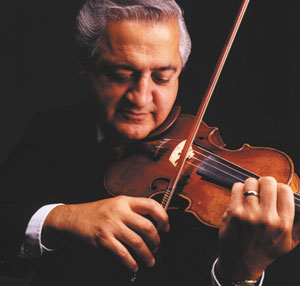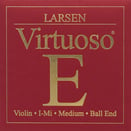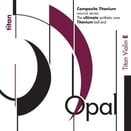 The advent, or rather the evolution of the steel violin e-string over a century ago brought violinists to new heights in their playing. The stablity and thinness of a steel wire allowed for greater brilliance, intonation, and speed. However, with the loss of gut's sweetness and warmth, further refining and improving the capabilities and characteristics of steel E strings is still an endless pursuit of string makers today. More than just a simple steel wire, the full composition and manufacturing method of steel strings involves trade secrets, precious metals, and very high tolerances! The nuances of response, feel, tension, and volume make choosing the right E-string an adventageous feat for musicians today. We sat down with SHAR CEO, Charles Avsharian, to discuss E-Strings for violinists.
The advent, or rather the evolution of the steel violin e-string over a century ago brought violinists to new heights in their playing. The stablity and thinness of a steel wire allowed for greater brilliance, intonation, and speed. However, with the loss of gut's sweetness and warmth, further refining and improving the capabilities and characteristics of steel E strings is still an endless pursuit of string makers today. More than just a simple steel wire, the full composition and manufacturing method of steel strings involves trade secrets, precious metals, and very high tolerances! The nuances of response, feel, tension, and volume make choosing the right E-string an adventageous feat for musicians today. We sat down with SHAR CEO, Charles Avsharian, to discuss E-Strings for violinists.
Q: What do you look for in an E-string?

A: Tone quality and durability. I happen to prefer a really brilliant sound. I am currently using an Opal Titan (Titanium composite). I’ve also used the Larsen Virtuoso E. They are powerful and sound great on my Lupot.
Q: How often do you change E-strings?
A: I have had some last for many months.
Q: What about thickness and wear on your fingers?
A: One has to decide about the gauge/thickness by trial and error. A thick string will add pressure to the top of the violin - could be good or bad. I use a medium gauge.
Q: What is it that is most important to you about an E-string?
A: CLARITY. Pure ringing and responsiveness all the way to the end of the fingerboard. A PLEASANT SOUND. When played alone, (open string - not a cheap and annoying tone). AS SMOOTH AS POSSIBLE. Not producing a strident, ugly sound. POWER. Especially up high where the brilliance is absolutely needed and expected. LONG-LASTING. Not prone to breaking or becoming false quickly. "WHISTLING" RESISTANCE.
Q: Any other comments to any one considering trying a new E-string?
A: If you can't stand whistling... try the 'wound' E-strings.




